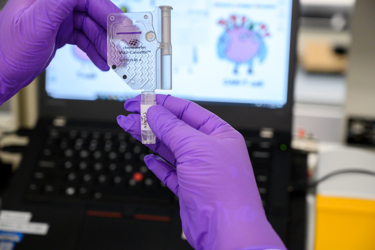4 Outsourcing Tips For Cell-And-Gene Therapy Developers

By Louis Garguilo, Chief Editor, Outsourced Pharma

Knut Niss, Chief Technology Officer, Mustang Bio, Inc., has four specific items of advice for Outsourced Pharma readers of all stripes, but most specifically targeted at the cell-and-gene therapy developers among you.
Mustang Bio (founded by Fortress Biotech) is an autologous cell-therapy developer. Niss is a former Novartis, Pfizer, and Biogen executive, and I’ve slightly edited his comments. (see part one here)
1. Pay To Run The Process Periodically
It takes some convincing and laying out your program and plan to a CDMO for a partnership to work.
But ultimately, so much depends on how the CDMO manages their capacity.
In the CAR-T space, for example, as soon as the patient is identified, you want that patient treated. You may, though, have the flexibility of a week or two. Any flexibility you can offer will help the CDMO prepare the clean-room space and manage their schedule.
Then it depends on what you can afford to promise.
For Mustang Bio, I can’t necessarily promise the 20 patients (or batches) we may anticipate annually for our X-linked severe combined immunodeficiency (“XSCID”) clinical program, but I know this:
I need the CDMO to run our process at least every six weeks or so.
This is simply to maintain the status of their training. It serves to keep the CDMO more prepared when the need for a new batch materializes; it fills our desire to ensure the same level of quality is always maintained.
If, in fact, there is no patient over a period of time, we need the confidence not just that the flexibility to run the process will be there, but that they actually have the institutional and individual memory to get it done, maintaining the highest level of quality.
Therefore, I can promise them at least that amount of additional work along the way, and at the same time keep the CDMO interested in our business from a financial standpoint as a paying customer.

In selecting a CDMO to begin with, quality is everything. You cannot focus on the cheapest option.
It’s the level of quality, because the CDMO can't build quality into a process or product that does not have it.
You certainly can agree to work with a CDMO that doesn't have the exact quality standards you need, but there are also costs and risks involved in this.
It is better to start with the best quality CDMO. So when we look at RFP responses and do due diligence in selecting a CDMO from the start, we pay close attention to the quality at the CDMO.
3. Project Management
It’s strongly suggested you have an internal project manager (PM) that manages the CDMO from your end.
Most problems relate back to a lack of communication, or outright miscommunication. So, you need a dedicated person to work closely with the CDMO.
That person on your end must be the right person.
If it is a tech transfer, which is a critical activity to move your asset to the CDMO, you want the right person – or people – from your organization in the room. Basically, you are teaching the CDMO your process.
Also, you want to ensure the CDMO doesn't change your process, which is human nature.
Regarding workload, a single project manager – depending on each project itself – can usually handle three CDMO relationships. Up to this point, the bandwidth is usually sufficient.
It's also a matter of give-and-take: The better the CDMO is at managing the client, the less work there is on our end.
That's also a part of selecting a CDMO – look for well-run organizations that know exactly how to work with c&g clients.
Even if your therapy is an orphan-drug therapy, a CDMO should be required to assign a specific project manager to you.
I actually haven't seen problems with this approach. I think it's to their benefit. Again, when you work with a CDMO, most of the problems are a result of poor communication.
So we strongly emphasize this point of direct contact. To be clear, I'm certain any project manager we work with at the CDMOs is managing other programs.
At an earlier point in my career, I did ask a CDMO to change the PM because he was ineffective. That person was clearly overworked. He had too many programs; we didn't get out of that position what we needed. I asked them to change, and they did.
4. Let The World Know
The reason we decided to do a press release on our new CDMO relationship – is because we wanted more organizations and people in Europe to know Mustang Bio and what we are working to accomplish.
For our organization, a public announcement with the CDMO served as a kickstart of raising awareness of our program in Europe. So healthcare providers start seeing there may be a new therapy becoming available that they and their patients could have access to.
Also here, as I have written and suggested for years here at Outsourced Pharma, it is also simply good policy to utilize the notoriety of a CDMO with a solid history.
Final Thoughts
Concerning autologous therapies specifically, if CDMOs aren’t taking the following into consideration, you should educate them that:
Autologous therapy has the advantage that every patient is a batch. It is a positive that with this therapy, there can be a constant revenue stream.
Once we start treating patients, we’re not going to change CDMOs unless absolutely necessary. It's going to be a continuing, long-term business arrangement.
By extension, for whatever drug or therapy you are developing, finding the business positives that will benefit your CDMO of choice is important to form a partnership. All four of the suggestions above, when taken broadly, can serve as a base for outsourcing success.
